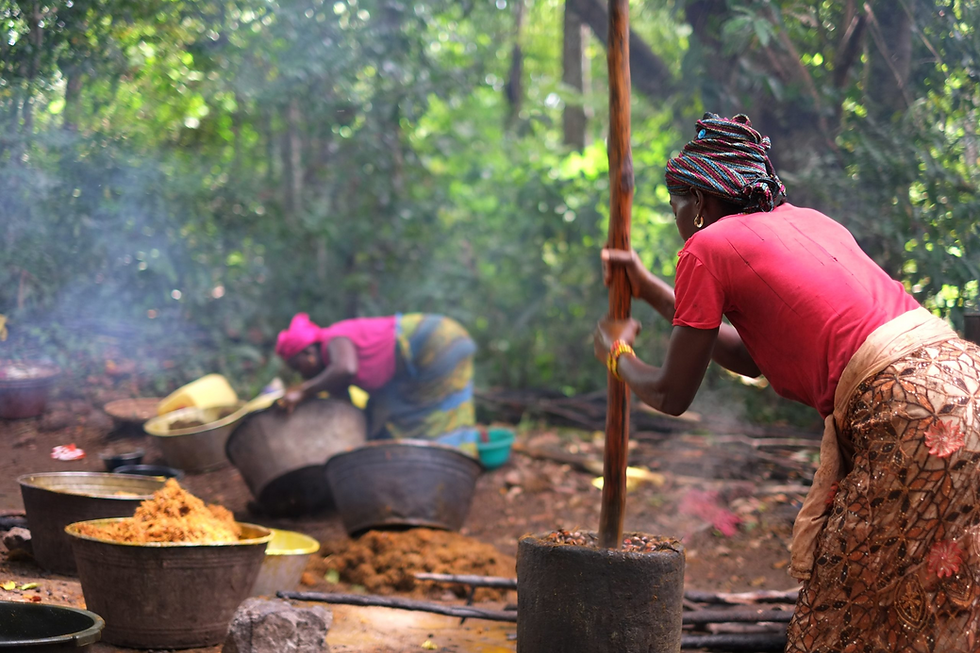THE UNSUSTAINABLE PRODUCTION OF PALM OIL AND CONSEQUENT DEVASTATION
- 180DC SGGSCC
- Jun 12, 2021
- 3 min read

Did you know that palm oil is the most consumed vegetable oil in the world? Accounting for one-third of global plant oil production in the world, palm oil continues to be consumed since thousands of years. Native to Africa, palm oil is now produced in 44 other countries as well and is present in nearly everything- from pizzas and doughnuts to toothpaste and detergents. Being such a versatile oil with varied properties and functions, it can be used both as a liquid and a solid, which is primarily why it is given an advantage over the other oils. While it is majorly adopted as a cooking oil in Asian countries, it is also used in the manufacturing of lipsticks, shampoos, ice-creams, chocolates, soaps, and even bio-diesel.
The relevance that palm oil plays worldwide is incomparable, however, despite all the benefits it provides to us, palm oil is highly detrimental to the environment and responsible for its degradation.

Palm oil has been a major driving factor for deforestation of some of the world’s most bio-diverse forests. Destroying the habitat of already endangered species like 'orangutans', the oil is also responsible for being a cause of air, soil, and water pollution. This is due to the generation of effluents every metric ton of palm oil produces. Large-scale conversion of tropical forests to oil palm plantations has had a devastating impact on the climate, resulting in forest fires. Moreover, if we look into the social impact that palm oil has been causing, it has been a reason for activities like human trafficking and child labor as well.
Countries like Indonesia and Malaysia which account for 85% of their total global production, employ more than 100,000 children to work on oil plantations.

Millions of people have even lost their livelihoods in the process of palm oil production, and the deforestation so caused has destroyed essential ecosystem services. Palm oil, also, has a negative impact on human health because of the presence of high saturated fat in it, causing cardiac problems. Thus, palm oils increase the risks for cardiovascular diseases as well as raise the low-density lipoprotein cholesterol. However, even though palm oil is creating negative ecological and social impacts globally, it is an incredibly efficient crop.
To get the same amount of productivity as palm oil from alternatives like soybean or coconut oil, would require an increase in resources, incurring additional costs and threatening other habitats and species. Furthermore, palm oil is immensely vital for the GDP of various emerging economies and there are millions of farmers dependent on its production. Thus, boycotting palm oil isn't an answer, but demanding more action from the concerned authorities to tackle these issues is essential.

Several governments and organizations have already recognized the problems associated with palm oil and have started implementing viable solutions. In 2012, the UK Government shifted their production of palm oil solely to sustainable sources, which don’t harm the environment or homo-sapiens. However, on the other hand, the United States of America implemented an undiplomatic démarche, banning all shipments of palm oil from one of the world’s biggest producers, on finding out indications of forced labor on these plantations. Organizations like the World Wide Fund for Nature (WWF) have been working tirelessly to reduce the production of palm oil at the cost of rainforests. WWF has begun to implement and promote better practices for sustainable palm oil production through Roundtable on Sustainable Palm Oil (RSPO). They have also been encouraging companies to use certified sustainable palm oil in all the products they deal in.
Finally, the need of the hour is to eliminate all incentives that lead to the destruction of forests for the production of palm oil, because no matter how important palm oil is, it cannot come at the cost of the environment.

Comments